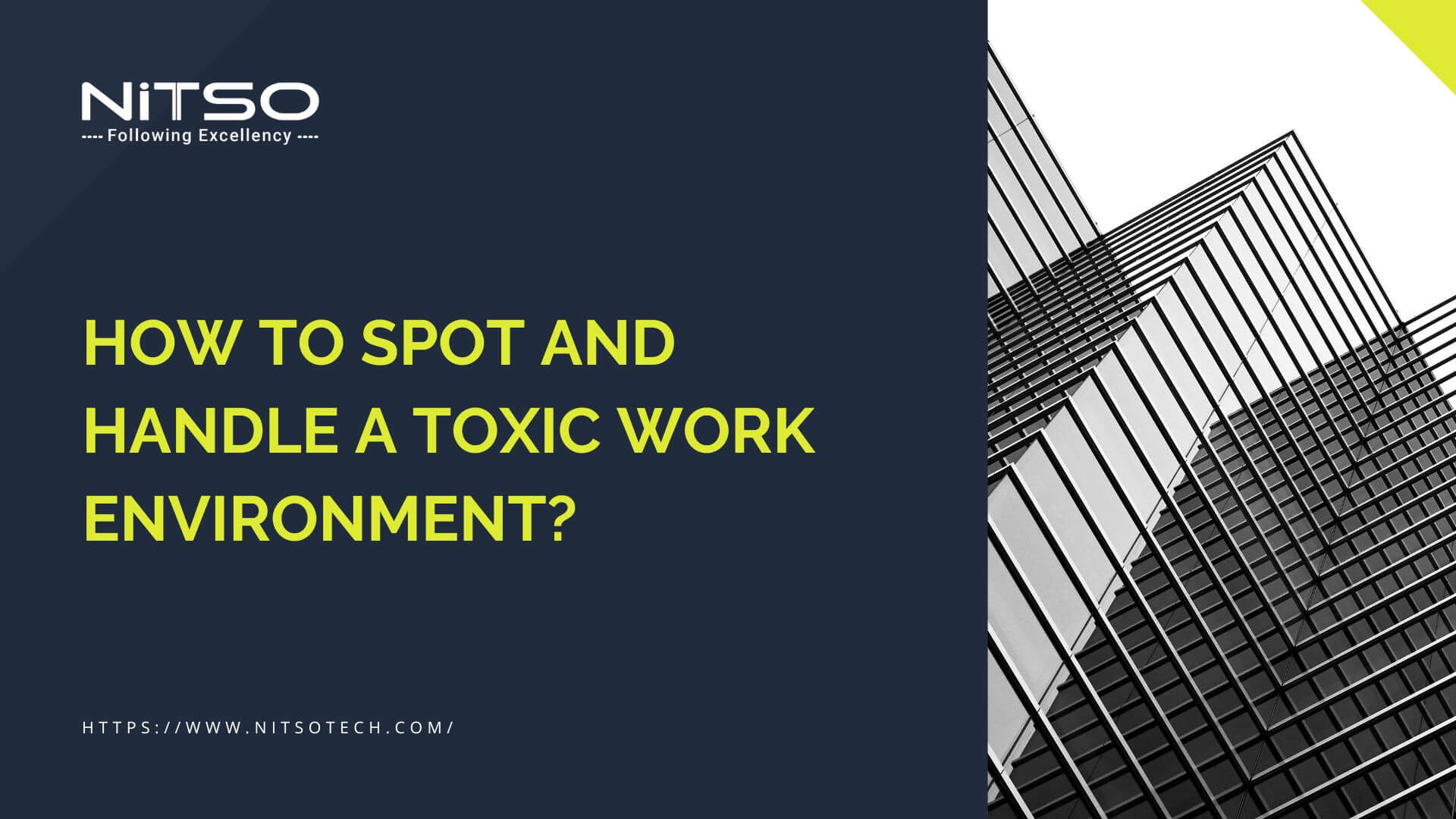A toxic workplace refers to a work environment that is unhealthy, stress-inducing, and damaging to the well-being and performance of its employees. A toxic workplace is characterized by things like a lack of support and trust, harassment or discrimination, and extreme demands or expectations.
According to studies, toxic workplace cultures are a major and rising problem in workplaces globally, including in India. Too many employees report being part of a work environment that causes severe stress and harm. This can negatively impact employee motivation, engagement, mental health, and physical health – and by extension, also significantly limit company success and growth. It is thus essential for both employers and employees to be able to identify the key signs of a toxic workplace.
This article outlines the main indicators and warning flags that signal an unhealthy, dysfunctional, or harmful work culture that urgently needs to be addressed. Being able to recognize and call out these concerns is the first step toward enacting positive changes or removing oneself from a damaging situation.
Table of Contents
What are the Main Signs of a Toxic Workplace?
1. Lack of clear communication
One major red flag of a toxic workplace is a lack of clear communication at all levels. When expectations, processes, and priorities are constantly vague or ill-defined, employees are left confused and frustrated about job duties or performance objectives. Important information gets lost or confused amidst poor communication systems.
For example, managers may give ambiguous or even contradictory directives without clarifying responsibilities. Alternatively, higher-level leaders may set unrealistic goals without providing a clear strategic plan to meet them. With poor communication, employees also often receive little constructive feedback on their work.
When staff don’t understand what is expected of them or how their roles connect to larger goals, they struggle to excel and the company culture grows increasingly toxic. Even worse, a lack of transparency around decision-making and future plans breeds distrust, uncertainty, and low morale.
Overall, the combination of unclear messaging, processes, and expectations alongside little useful feedback indicates very unhealthy workplace dynamics in need of repair.
2. Disrespectful behaviour
Signs of a toxic workplace culture often include frequent disrespectful behaviour that goes unchecked. For example, managers and executives may routinely yell at, insult, mock, or even verbally harass employees. Uncivil, rude, and abusive communication becomes the norm.
Leaders play favourites rather than treat staff fairly and fail to shut down real bullying or aggressive behaviour problems. In fact, those in positions of power often dismiss valid complaints about harassment or discrimination in the office. Beyond aggressive acts, passive disrespect also pervades, with certain groups being ignored or interrupted in meetings.
When prejudices, cronyism, and incivility persist without consequences, a toxic environment of disrespect takes hold. Employees understandably grow resentful and closed off, eroding work quality and collaboration. Some may leave the company altogether.
By allowing or enabling disrespect, leadership communicates that staff well-being and dignity don’t matter – a tremendously harmful message.
3. High employee turnover
A glaring signs of a toxic workplace is high employee turnover or churn. When staff members are constantly quitting jobs at a much higher rate than industry standards, it indicates deep dysfunction. Some turnover is normal for any company, but frequent or large-scale resignations signal poor working conditions.
Moreover, constantly posting job openings and having to retrain new hires is disruptive and expensive for any organization, eating up time managers could use to innovate or meet goals.
If the same roles repeatedly need to be refilled quickly, red flags about the workplace culture should arise. Management needs to dig deeper to understand what makes employees so dissatisfied that they leave entirely, rather than assume people are replaceable resources.
4. Lack of accountability
A pervasive lack of accountability also signals a toxic organizational culture. In particular, when no one takes responsibility for mistakes or poor decisions, it breeds resentment and distrust. For example, managers may chronically shift blame to their teams or other departments rather than own up to their errors.
Similarly, employees get accustomed to pointing fingers at each other when a project goes awry, rather than conducting constructive analysis. Without personal accountability, groups are unlikely to learn from failures because the root causes are obscured.
A lack of transparency around decision-making also ties to the accountability problem. When leadership makes seemingly arbitrary decrees without context, employees rightfully grow frustrated. Not understanding the rationale behind choices makes it harder to buy into larger goals.
Furthermore, the absence of openness or honesty around actions suggests the concealment of ethics issues. Overall, evasion of responsibility alongside opaque systems forms a toxic mix eroding trust in leadership and overall workplace cohesion.
5. Overwork and unrealistic demands
The modern workplace often glorifies being perpetually overworked, but this trend fosters toxic environments. In particular, managers frequently overload teams with unreasonable workloads and absurdly tight deadlines. Leadership then reinforces these unrealistic expectations by encouraging employees to stay extremely late, not take vacations, and be available 24/7.
When overwork gets normalized, it pressures everyone to maintain an unsustainable pace. The employee gets burned out and their health suffers, from high blood pressure to decreased immunity. Pushback gets framed as a weakness, discouraging any restorative balance. Interestingly, research shows overworked employees produce lower quality work and higher rates of errors over time. But irrational demands stay unchecked.
All this signals serious toxicity in workplace culture – valuing capital over people. Without intervening support systems, even dedicated employees reach breaking points. By setting practical expectations and boundaries, leadership can disrupt toxic patterns of overexertion. Alleviating constant pressure to do the impossible fosters healthier, more creative workplaces.
6. Lack of collaboration
A toxic organizational culture often deliberately discourages teamwork through extreme competitiveness. Rather than promote collaboration, managers pit employees and departments against each other. Resources get collected rather than shared to optimize collective outcomes. People hesitate to exchange feedback or ideas out of fear that others will steal credit.
At times, leaders even incentivise backstabbing behaviours by rewarding only top individual performers rather than those that uplift overall team efforts. Without a spirit of collaborative support, workers feel isolated and disengaged.
Yet in the competitively-charged environment, no one feels safe or supported enough to coordinate wider initiatives. By fostering trust and incentivizing true collaboration, leadership can begin to unlock collective potential.
7. Leadership issues
Often, toxic workplace cultures stem from similarly dysfunctional leadership. When those in senior management or executive positions routinely bully, micromanage, or undermine their own teams, it establishes harmfully unhealthy dynamics.
Capable employees may face criticism and distrust rather than support to develop skills or take on challenges. Rather than inspire collective purpose and growth, authoritarian styles focused on control foster instability and fear.
Without fundamental changes in leadership style and mindset toward staff, attempts to mitigate other toxicity symptoms will struggle.
8. Lack of diversity and inclusion
Often intertwined with disrespect, many toxic workplaces lack meaningful diversity or inclusion efforts. For example, hiring and promotion practices may systemically favour certain dominant groups.
Microaggressions against minorities and biases around attributes like gender, ethnicity, or age continue unchecked. Those perceived as different frequently find themselves criticized or passed over for key jobs. As challenges or harassment get ignored rather than investigated properly, those facing discrimination grow silent for fear of retaliation. Without equal access to opportunities and respect, toxic prejudices fester quietly.
Ultimately, a lack of diversity and inclusion restricts an organization from accessing and empowering talent.
9. Stifling of innovative thinking
A hallmark of a toxic organizational culture is an outright rejection of new ideas or process innovations. Rather than consider suggestions, feedback, or original perspectives, leadership expressly communicates that their approach must be followed without doubt.
Speaking up with useful creative concepts falls not just on deaf ears but prompts penalty. Over time, bright employees sharing modernized solutions hold back from fear of retaliation. Unwillingness to implement new systems or try updated methods causes stagnation.
Not incentivizing agility and innovation strangles productivity over the long term. By valuing diverse thoughts and making space for new solutions, companies can transform toxic workplaces.
10. Chronic negativity
A highly visible signal of a toxic workplace is constant complaining, gossiping, or negativity. Rather than recognizing employees’ wins or milestones, staff dwell endlessly on setbacks and deficiencies. Conversations centre around grievances and anxieties without considering potential solutions.
Negative attitudes easily spiral as team members validate each other’s criticisms and complaints. Over time, the overwhelming cloud of defeat deteriorates morale, engagement, and loyalty.
Once vibrant employees grow unemotional and resentful. Such chronic toxicity originates partly from a lack of psychological safety and trust – people instinctively guard themselves against vulnerability in a hostile climate. By building more open, supportive spaces for balance and growth, leaders can shift engrained patterns of negativity.
Key Takeaways
A toxic workplace culture critically impacts employee satisfaction, mental health, attrition risk, and ultimately, company success. Recognizing the slight warning signs of a toxic workplace enables intervention before irreparable damage. With courageous efforts toward greater transparency, respect, inclusion, communication, and humanity, leaders can cultivate environments where both people and organizations truly thrive.








0 Comments